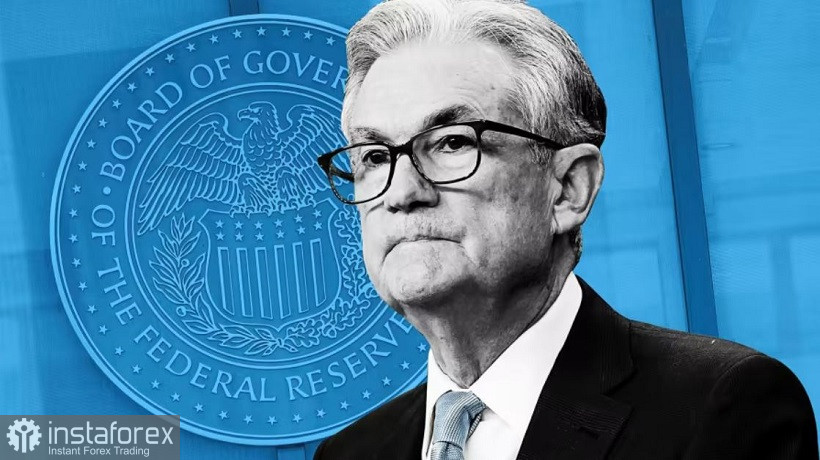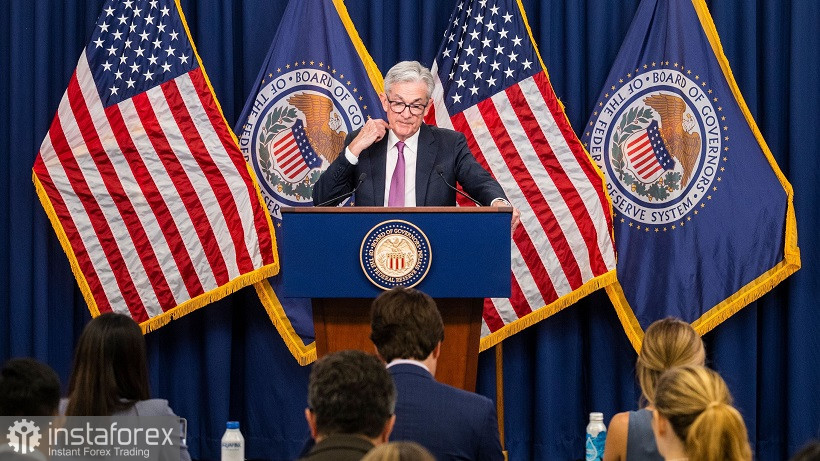The results of the July Fed meeting disappointed dollar bulls. The verdict of the American regulator cannot be called "dovish," but traders were set up more aggressively. Therefore, despite the 75-point increase in the interest rate, as well as the relatively hawkish rhetoric of Fed Chairman Jerome Powell, the greenback weakened throughout the market yesterday, including in pairs with the euro. Buyers of EUR/USD could not leave the price range of 1.0130–1.0280, but at the same time, they were able to move away from the lower limit of this corridor. And this was a very significant achievement for the pair's bulls, given the array of problems that hit the euro.

In general, the dollar has become a victim of inflated market expectations. After all, a few weeks ago, the preliminary alignment regarding the possible outcome of the July meeting was completely different. In June, Powell warned that at the next meeting, Committee members would decide whether to raise the rate by 50 or 75 basis points. After the publication of the core personal consumption expenditures (PCE) price index, the scales tilted to the 50-point option. The most important inflation indicator for the Fed again reflected a slowdown in growth.
Therefore, if we evaluate the results of the July meeting in the context of June expectations, the Fed implemented the most hawkish scenario. But shortly before the meeting, another inflation report was published in the United States, which reflected a jump in the consumer price index. The general CPI overcame the 9 percent mark for the first time since 1981, after which rumors began to spread in the market that the American regulator might decide on a 100-point increase in the rate.
And these rumors were not born out of the blue: Fed representatives Raphael Bostic and Mary Daly made corresponding proposals. The flywheel of hawkish expectations began to unwind with renewed vigor, so two weeks after the publication of the CPI growth report, the 75-point rate hike option was interpreted by the market as "basic." The Bank of Canada also added fuel to the fire, which unexpectedly increased the rate by 100 basis points.
In other words, the dollar was initially trapped by inflated expectations. Despite the fact that several representatives of the Fed, who have the right to vote in the Committee, criticized the idea of a 100-point increase, the degree of heat did not decrease—traders expected an aggressive attitude from the Central Bank.
But contrary to these expectations, Powell dispelled the hopes of dollar bulls about the continuation of aggressive tightening of monetary policy. According to him, the Fed may resort to another "unusually large" rate hike in September "if the inflationary pressure on the economy does not weaken sufficiently by autumn." In addition, Powell signaled that the rate was approaching a neutral level. As the head of the Fed noted, the regulator plans to reach a "moderately restrictive level" – 3.5% – by the end of this year.
The market clearly expected more in light of the latest data on the growth of CPI. However, Powell responded that despite rising inflation and a strengthening labor market, "other economic indicators have softened." It is not difficult to guess which macro indicators the head of the Federal Reserve was talking about.
It is enough to recall the release of data on the volume of industrial production in the United States (for the first time since December 2021, it is in negative territory), the American services PMI (which collapsed to 47 points), reports in the housing market (a significant decline in sales of new and secondary real estate) and the indicator of consumer confidence of Americans (a three-month decline in the indicator, in June – at least since February 2021).

In general, based on the results of the July meeting of the Fed, we can conclude that the regulator will resort to aggressive rate hikes only as a last resort. According to Powell, a more active rate hike (relative to a 75-point increase) "may take place at one of the future meetings, if the incoming data will be conducive to this." Otherwise, the Fed is ready to implement a scenario of a moderate rate hike.
Rabobank experts said the US regulator will raise the rate by 50 basis points in September, and then by 25 points at each of the remaining meetings. If inflation shows stronger dynamics, the Fed will have to increase the rate by 50 points at each meeting this year. According to other analysts, the regulator may decide on a 75-point increase in September, but everything will depend on the trajectory of key macroeconomic indicators, primarily inflation.
In other words, the Fed made it clear yesterday that it is ready to further tighten monetary policy, at a moderate pace. Powell also warned about the rate approaching the neutral level (while the issue of exceeding this level has not yet been discussed). Such a result of the July meeting exerted background pressure on the dollar, but paired with the euro, the greenback did not stay in sadness for long. The euro is now unable to pick up the banner and reverse the situation on the pair. On the contrary, the weakness of the euro allows EUR/USD bears to dictate their conditions for the pair.
Gas prices in Europe yesterday broke the $2,500 mark per thousand cubic meters amid a reduction in supplies from Gazprom. And this is just one of the problems of the single currency, which, however, is system-forming. A blow to the European industry, an increase in the cost of electricity, a further increase in inflation, etc.
In my opinion, the EUR/USD pair still retains the priority of short positions. It is advisable to enter into sales on the upward corrective pullbacks. The downward targets remain the same: 1.0150 (pullback to the area of the 2nd figure), 1.0100 (the lower boundary of the Kumo cloud on D1), and 1.0050. The main target in the medium term is the level of parity.
 Tiếng Việt
Tiếng Việt 
 Русский
Русский English
English Bahasa Indonesia
Bahasa Indonesia Bahasa Malay
Bahasa Malay ไทย
ไทย Español
Español Deutsch
Deutsch Български
Български Français
Français 中文
中文 বাংলা
বাংলা हिन्दी
हिन्दी Čeština
Čeština Українська
Українська Română
Română

